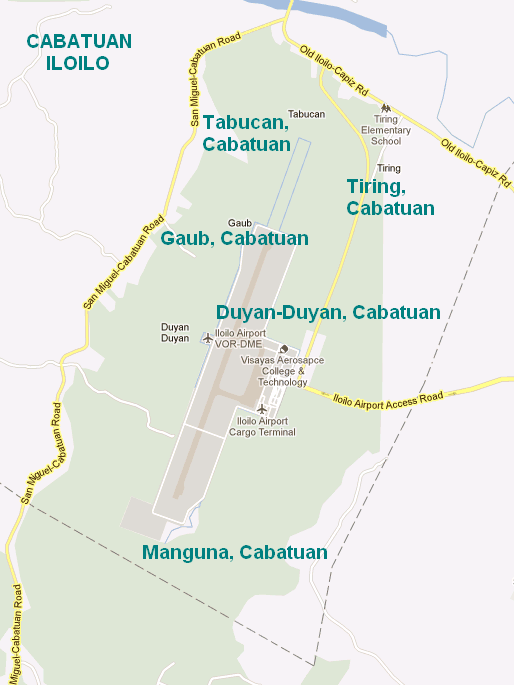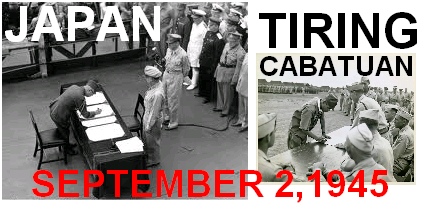 Iloilo Airport .com Cabatuan, Iloilo, Philippines |
 Iloilo Airport .com Cabatuan, Iloilo, Philippines |

Map Showing the Brgy Tabucan and Brgy Tiring, Cabatuan access road at the top; and the Brgy Duyan-Duyan, Cabatuan access road at the right. |
|
JAPANESE SURRENDER IN CABATUAN AIRFIELD (RIGHT PHOTO) © IloiloAirport.com  The Cabatuan Airfield was the site of the official Japanese surrender on September 2, 1945. On this date, which happened to be also the day the Japanese signed the surrender instrument in Japan (aboard the USS Missouri in Tokyo Bay, left photo), the Japanese Panay Unit commander signed his own surrender instrument at Cabatuan Airfield (right photo). Had the Japanese not surrendered in September 1945, the very first unit scheduled to land on Japan on November 1945 (in a massive invasion dwarfing even the Normandy Landing in Europe) will be the American troops based in Cabatuan Airfield. A recruiting and training unit of the U.S. Army was also based in Cabatuan to recruit local guerillas for the Allied invasion of Japan. © IloiloAirport.com |